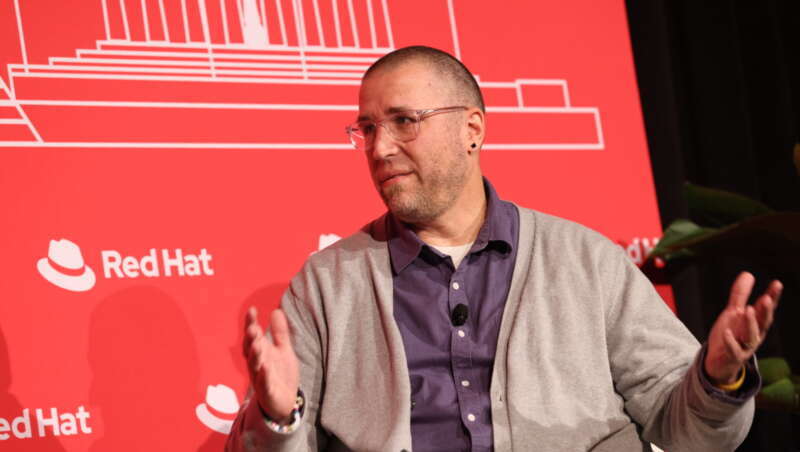
The FBI is far along in the move to the cloud it began about seven years ago, a top FBI IT official said on Nov. 19 at the Red Hat Government Symposium.
Daniel Rubenstein, infrastructure architect in the FBI’s Criminal Justice Information Division, said the bureau’s systems are “probably 95 percent in the cloud.” In his division, he said, that includes “all the fingerprint matching, the facial recognition, the National Crime Information Center. So, we’re really focusing on maturity, cloud maturity … and that developer onboarding experience.”
Rubenstein appeared at a panel discussion on “Evolving Application Delivery and Secure Software Supply Chain in the Age of AI.” Speakers from other Federal agencies described aspects of their own modernization journeys, focusing on trends such as increased use of containerization with tools such as Kubernetes. The speakers included Alex Reber, operations manager for the Enterprise Application Division at the Department of Justice’s Executive Office for United States Attorneys (EOUSA).
E.P. Mathew, deputy chief information officer at the Defense Intelligence Agency (DIA) – which provides intelligence for the secretary of defense, the Joint Chiefs of Staff, and combatant commands – said at the session that the agency has also zeroed in on bringing developers aboard.
But he said officials have faced challenges recruiting younger people for DIA and the intelligence community generally, an issue he saw with his own son, who is a software engineer. “He just came out of college … and he said, ‘Dad, [the intelligence community] doesn’t have access to a phone, or my Apple Watch, or Instagram, or all these other things. I can’t compete.’”
Mathew said DIA has tried to compensate by developing “an unclassified software factory” and letting applicants know that they don’t necessarily need high-level security clearances, which has helped with recruiting.
His words prompted session moderator Eamon McCormick, vice president for North America Public Sector Technical Sales at Red Hat, to joke: “You might have a chance at your son now.”
DIA has made its own progress in modernization, with officials revealing recently that the agency is nearing completion of a nearly two-year long “tech refresh” of its Joint Worldwide Intelligence Communication System (JWICS). The refresh is focused on updating equipment, building out cybersecurity tools, and optimizing use cases.
The FBI, meanwhile, has been increasing its use of AI “at a relatively basic level,” such as assisting with language translation and triaging data, FBI Deputy Director Paul Abbate said recently. He stressed that the bureau needs more technology resources and tools to better execute its mission.
